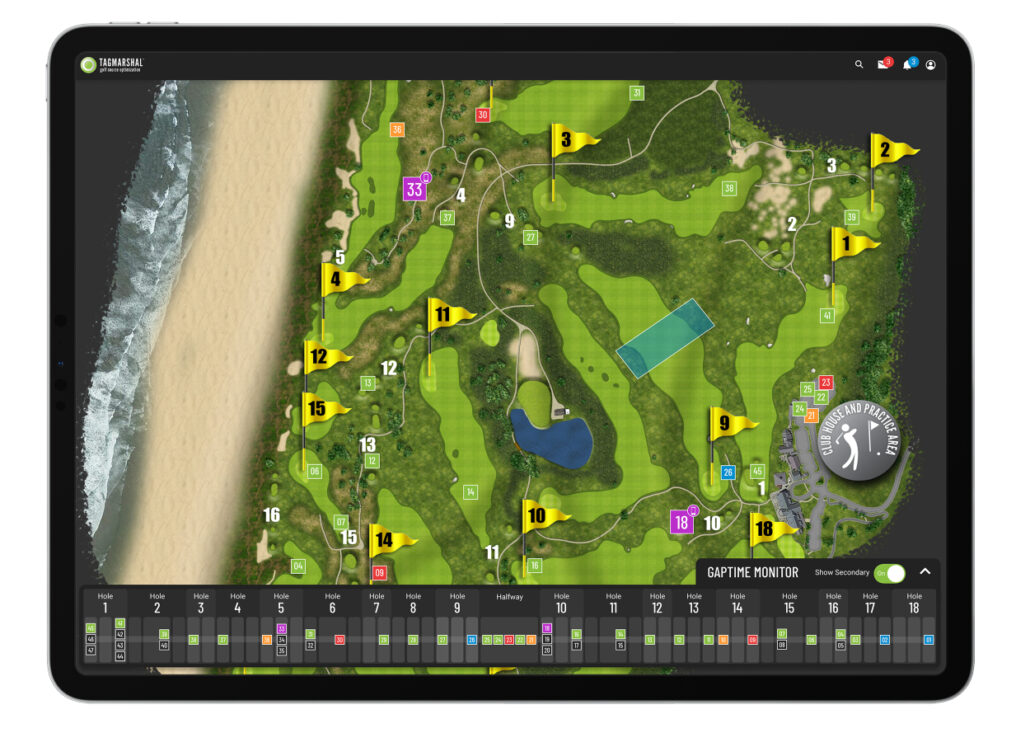Education Series: How to manage the player experience – a practical guide
Research by the NGCOA and USGA found that 84% of course owners and 74% of players rated pace and flow of play as a top 3 player experience factor.
With courses seeing a higher volume of rounds season on season, ensuring a steady on-course flow is a critical part of whether players enjoy their rounds.
We will outline 5 ways your course can improve pace of play, turning it into an asset that grows your bottom line and keeps your members and guests loyal.
1. Improve starter accuracy
- Starting late immediately puts each playing group at a disadvantage, as they will need to make that time up in order to stay on pace.
- Track and measure your starter accuracy on a weekly and monthly basis, making reporting on this part of your team’s KPIs.
- If starter accuracy is low, identify the issues and put a plan in place to fix these.
2. Manage the gap intervals
- When gap intervals are too tight, bottlenecks can form, negatively affecting pace of play. Overly lengthy gap intervals reduce tee sheet capacity, having an adverse effect on both availability and revenue.
- Track and measure the effectiveness of different gap intervals over time to find the optimal fit for your course.
- These may differ depending on the time of day, the day of the week and even the course layout for that day. During periods that play quicker, gap intervals can be tightened to increase revenue without impacting the player experience.
PRO TIP: Tagmarshal’s Gap Time Monitor collects real-time gap interval data and helps identify opportunities to optimize these intervals, creating additional capacity and green fee revenue.
3. Improve hole setups
- Make pin placement easier on holes that traditionally are more difficult to play, especially during peak traffic times. Very few golfers are going to complain about shooting a low score!
- The same logic applies to which tee boxes are allocated on specific days.
- Assist players with yardage markers so they can hit more accurate approach shots.
4. Identify pace of play issues proactively
- Having a clear view of which playing groups are starting to affect field flow means that you can intervene before the rest of the field is negatively affected.
- Ask slow-playing groups how you can assist in getting them back into position, framing the intervention in neutral terms and the marshals as service ambassadors.
- Where possible, build out player profiles so that you can assign specific tee times based on their pace of play history.
PRO TIP: Tagmarshal’s real-time, birds-eye view of course flow highlights where each playing group is and uses algorithms to identify potential pace of play issues before they worsen. Management can view the Live Map on a desktop, tablet or mobile screen and send player assistants to address these.
5. Implement a pace of play policy and keep guests and members informed
- Communicate the course’s goal time repeatedly via email and phone exchanges, and throughout the clubhouse.
- Ensure each group is informed on the tee of what is expected from them and how they can stay in position (ready golf, playing from the right tee and so on).
- Keep the conversation going with regular data-driven updates on the course’s pace of play results.
Whereas other top player experience factors such as course conditioning require sizeable investments, implementing steps to improve your course’s pace and flow of play can show immediate results.
Focusing on the five methods outlined above as a starting point, your course can turn pace of play into an asset during a period when golf’s popularity continues to rise.
ABOUT TAGMARSHAL
Tagmarshal, the market leader in on-course optimization technology, provides courses with full, real-time operational oversight and reporting, giving golf operators the tools to manage pace and flow of play effectively, resulting in enhanced player experiences, increased efficiency through automation, and additional revenue generation.
Tagmarshal’s technology has collected over 10 billion data points from more than 75 million rounds of golf and has relationships with in excess of 700 partners, including Hazeltine, Whistling Straits, Baltusrol, Fieldstone, Bandon Dunes, Serenoa and Erin Hills.
Tagmarshal partners with several golf management groups, private, daily fee, public and resort courses, including 40 of the Top 100 US courses, as well as many $40-$60 green fee courses, which are seeing excellent results using the system.



 WATCH DEMO
WATCH DEMO